

Project Brief Introduction:
1.Product:Dried Wood Log Pellet Line
2.Capacity:8.5-9.5 T/Hour
3.TONY Brand 8.5-9.5 Ton /Hour Dried Wood Log Pellet Line Project Process
4.Main Machine: Comprehensive Chipper,Hammer Mill,TONY Pellet MachineTYJ760-Ⅲ-185KW,Pellets Cooler,Packing Machine And Belt Conveyors
5.Total Power: About 1100 kw
6.Need Area: About 800 ㎡ L: 40M W: 20M H: 6.517M
Project Layout For Customer:
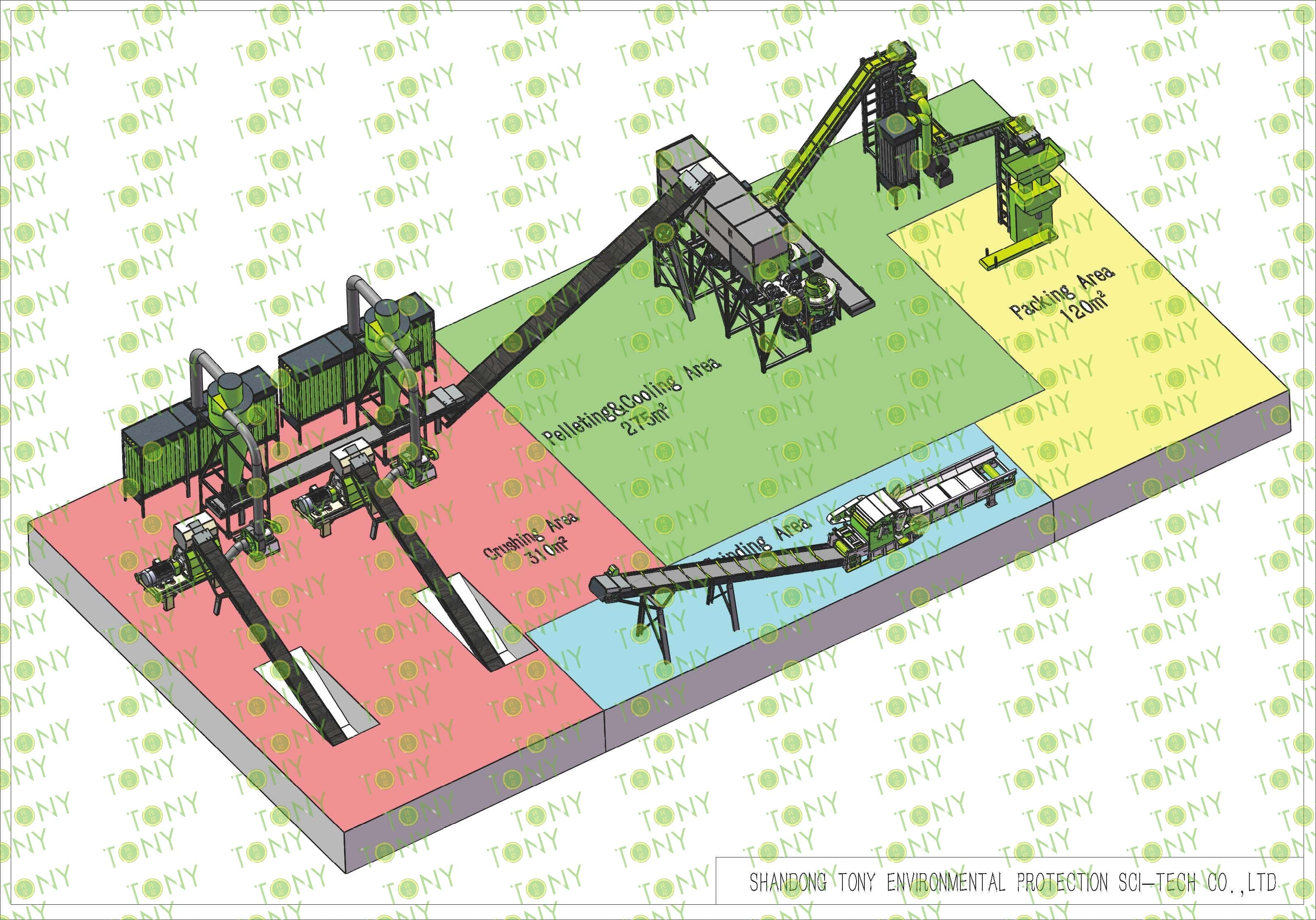
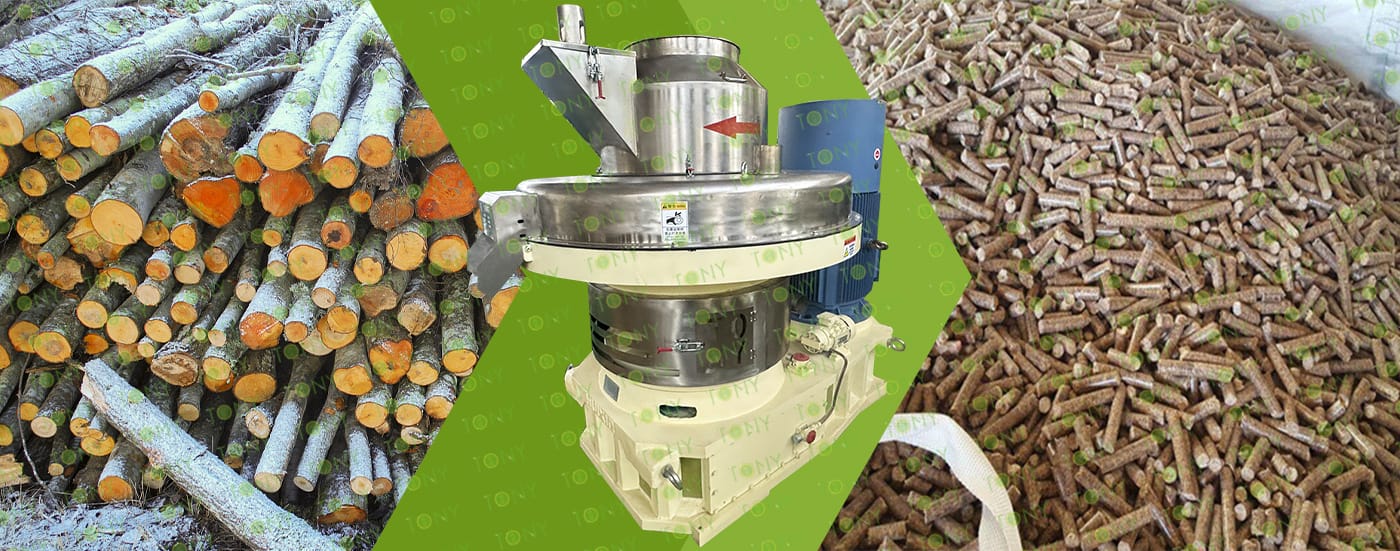
1. The working principle of dried wood log biomass pellet processing equipment
The core function of dry wood pellet processing equipment is to compress dried wood raw materials (such as sawdust, wood powder, and straw) into high-density pelletized fuel or material. Its operating principles primarily include the following key steps:
(1)Raw material pretreatment:
First, the dry wood is crushed to break down large pieces of wood into uniform sawdust or wood powder, ensuring a consistent particle size for subsequent compression.
(2)Extrusion:
The raw material is fed into the pelletizer's ring or flat die. The high-speed rotation of the rollers applies pressure, squeezing, rubbing, and heating the material within the die. The high temperature softens the wood fibers and allows them to bind tightly together, ultimately extruding them through the die to form cylindrical pellets.
(3)Cooling and screening:
The pellets, freshly extruded, are hot and need to be cooled to room temperature in a cooler to prevent mold. They are then screened to remove debris and impurities, resulting in a qualified product.
2. Characteristics of dried wood log biomass pellet processing equipment
(1)Wide Raw Material Compatibility:
It can process a variety of dry wood raw materials, such as dry sawdust, wood scraps, dry branches, and bark. It is compatible with materials with a moisture content of 8%-15% (without requiring extensive drying). It has low requirements for raw material form, reducing feed restrictions.
(2)Easy Operation and Maintenance:
Most equipment features automated control systems, reducing manual intervention. Key components are constructed of wear-resistant materials and feature a modular structure, allowing for easy disassembly and replacement, reducing maintenance costs.
(3)Environmentally Friendly and Energy-Saving:
The processing process uses no chemical additives (relying on the wood's natural lignin for bonding), resulting in zero harmful emissions. Some equipment utilizes frictional heat generated during the forming process to aid in material conditioning. Air cooling is often used in the cooling process (eliminating the need for large amounts of water). Fines and unqualified materials can be recycled back into the production line, minimizing material waste.
3. Application scenarios of dried wood log biomass pellet processing equipment
Biomass energy: Primarily used to produce wood pellet fuel, it replaces fossil fuels like coal and natural gas and is used in applications such as home heating, industrial boilers, and power plants (for example, many European countries have adopted wood pellets as their primary heating fuel).
(1)Agriculture and forestry:
Crop straw and forestry waste (such as dead branches and bark) can be processed into pellets for use as feed carriers (mixed feed ingredients) or organic fertilizers (after composting, used for farmland fertilization).
(2)Industrial manufacturing:
In the wood-based panel industry, wood pellets can be used as a raw material additive for particleboard and fiberboard to enhance board strength. They can also be used to produce chemical products such as activated carbon and lignin.
(3)Environmental engineering:
Processing solid waste such as tree branches generated by urban landscaping pruning and furniture factory scraps can be used to transform waste into valuable resources and reduce landfill volume.
(4)Small-scale processing sites and home workshops:
Rural or mountainous areas can use small-scale equipment to process local wood resources into pellets for home heating or export, increasing income.

TONY Brand 8.5-9.5 Ton/Hour Dried Wood Log Pellet Manufacturing Plant can take dried wood, various types of wood - related biomass materials, such as branches, small - diameter logs, and wood shavings, with dried wood as the main raw material. After pretreatment and processing, it is solidified into high - density wood pellet fuel. This fuel is an ideal substitute for coal and oil and plays a role in energy conservation and emission reduction. At present, it has been widely used in regions rich in wood resources.
1. Capacity: 8.5-9.5Ton/Hour
2. Raw materials: Dried wood logs , branches, small - diameter logs, twigs, etc.
3. Moisture: Dried type, about 10-15%.
4. Application: All kinds of wood - based biomass materials suitable for pellet production.
Suitable customers: Green energy companies, forestry enterprises, and private wood - processing workshops that have advantages in wood raw materials.
5. Finished Pellets Markets: Large power plants ,domestic heating, industrial heating, combustion heat, heating systems, boiler rooms, school canteens, foundry heat sources.


1. Project Name: Dried Wood Log Pellet Production Line
2. Raw Material: All kinds of Dried wood log
3. Moisture Content of Raw Material: 10-15%
4. Capacity: 8.5-9.5tons per hour
5. Process: Crushing Process - Fine Crushing Process - Pelletizing Process - Cooling Process - Packing Process
6. Main Equipment:Comprehensive Chipper TPC1300-600 -132KW,Effective Hammer Mill-TFD75*132-132kw, TONY Pellet Machine TYJ760 - Ⅲ - 185kw, Pellet Cooler, Double Packing Machine and Belt Conveyors

|
How to use the TONY pellet production line to make pellets from dried wood log? The process mainly includes the following steps and equipment: 1. Use TONY comprehensive chipper to cut dried wood log with a diameter of less than 30 cm into wood chips 25 - 55 mm in length. 2. Use TONY effective hammer mill to crush the 25-55 mm wood chips into 8-14 mm sawdust. 3. Use TONY vertical ring die pellet machine to produce pellets with a diameter of 6-8 mm. 4. Use TONY galvanized cooler to cool the pellets from 80-90°C to 20-30°C. 5. Use TONY double packing machine to pack the pellets into bags, each weighing 15-50 kg. For more detailed information and quotations, you can contact TONY. TONY can provide all the above - mentioned products at highly competitive prices and with excellent quality. |
|
|||||||||||||||||||||||||||||||||||||||||||||
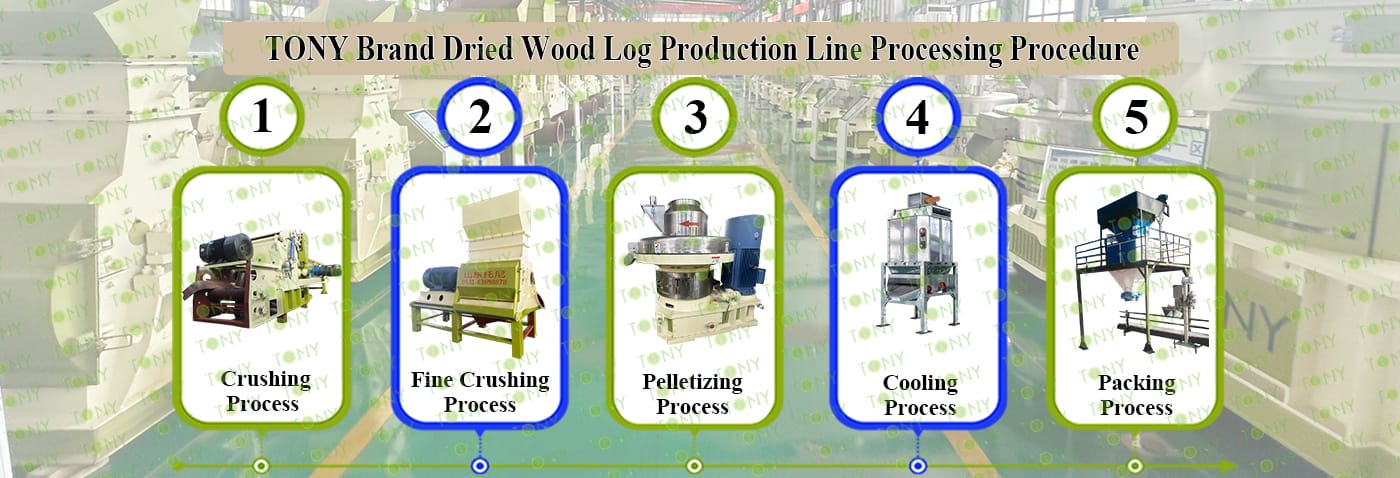
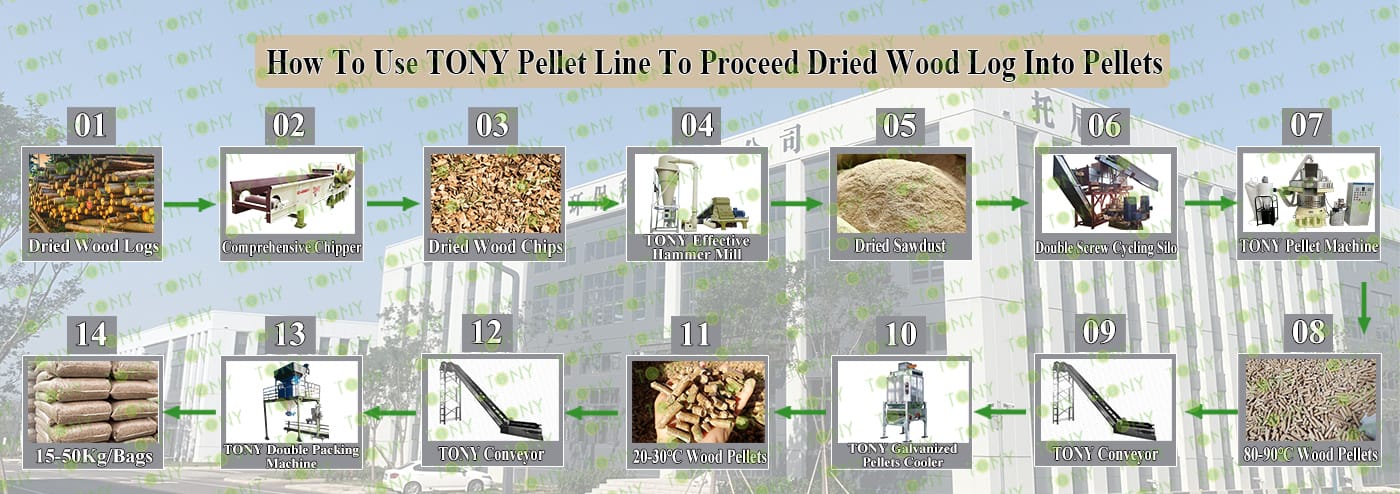

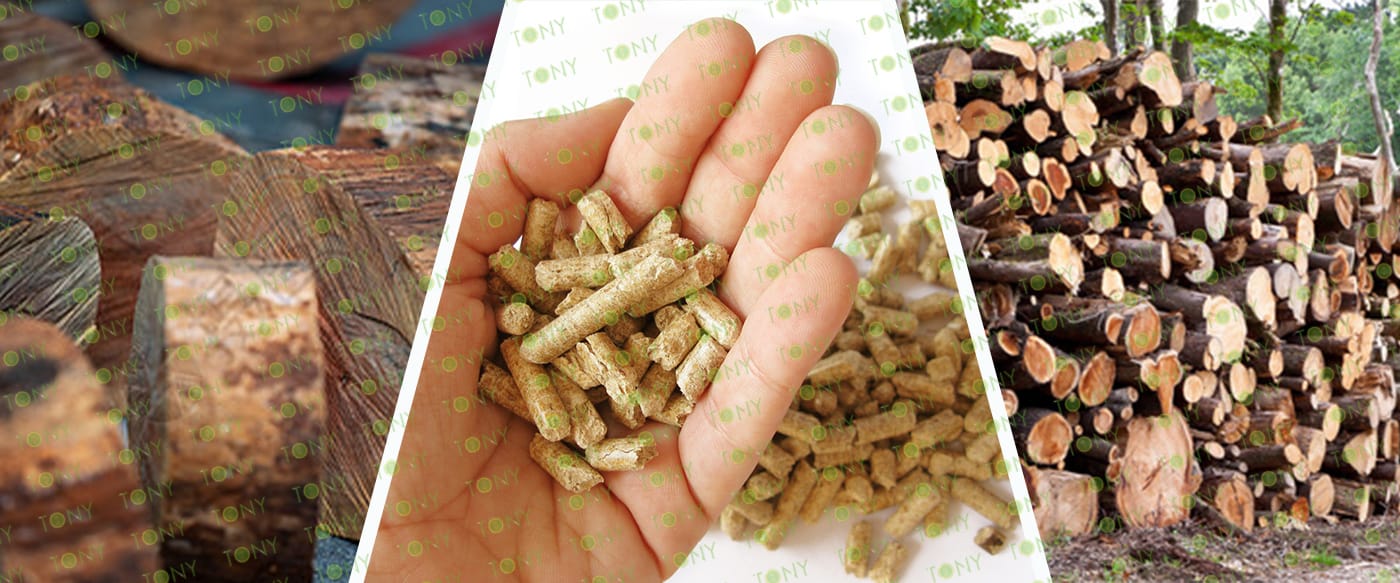

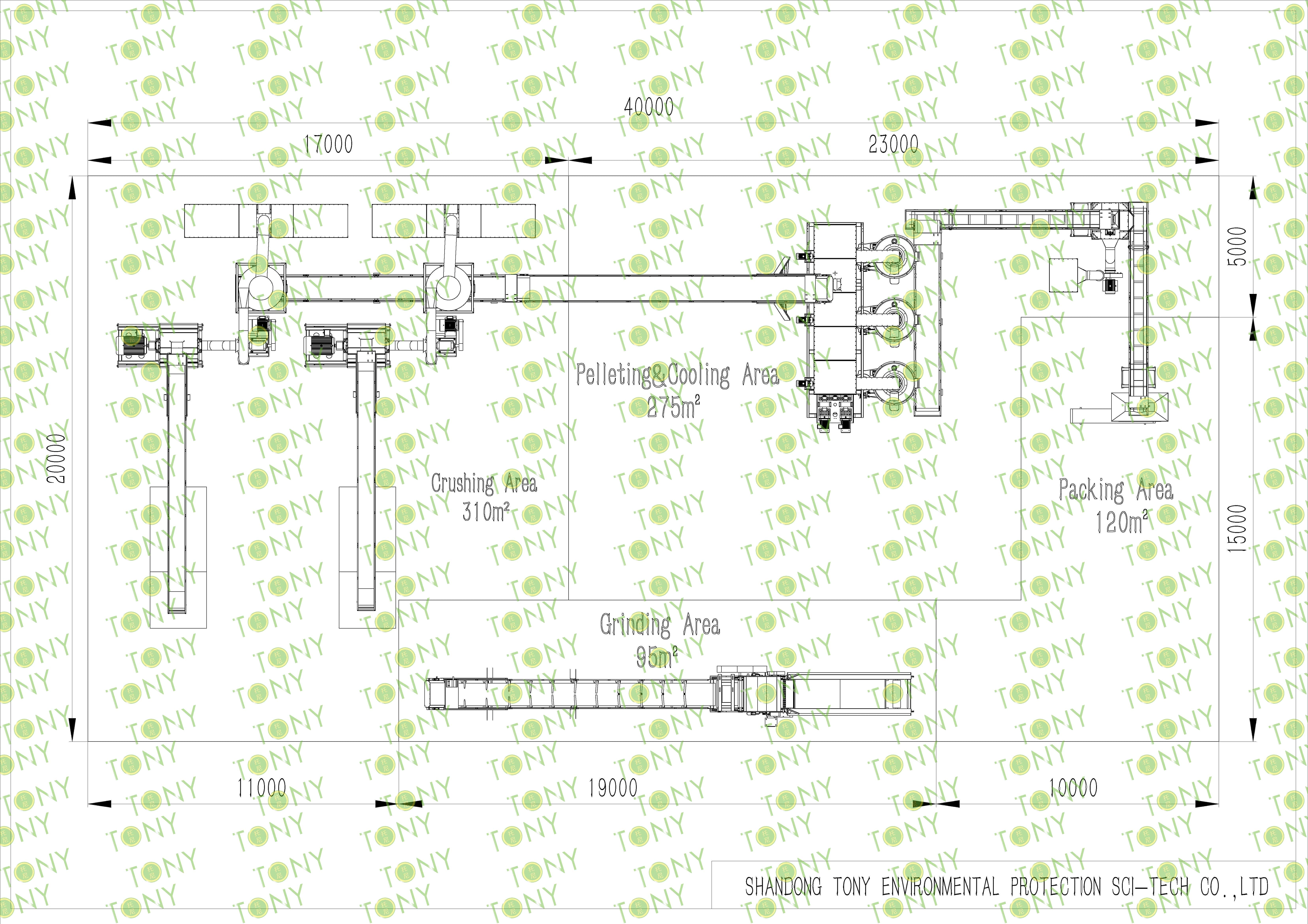
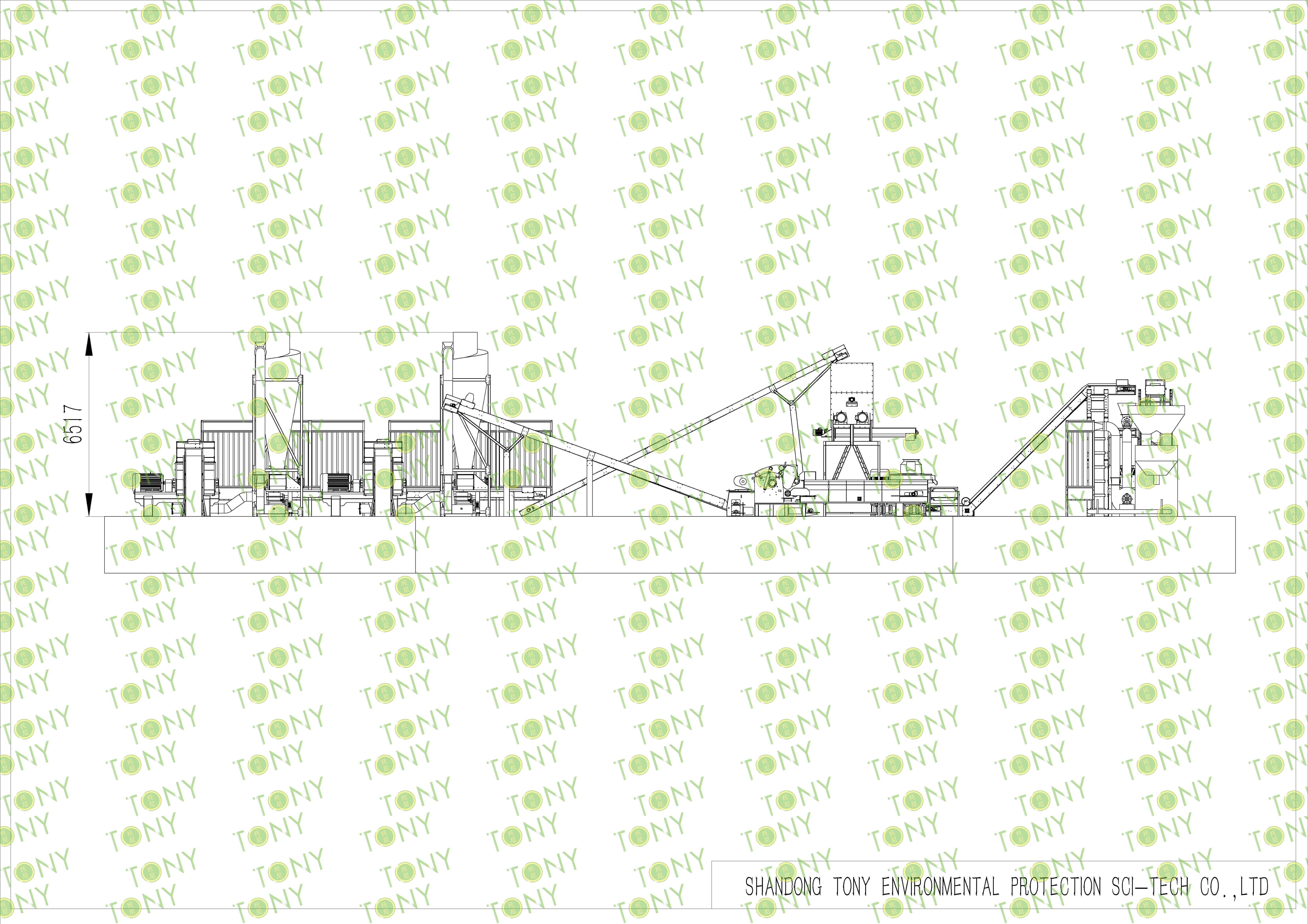
| Next, TONY Will Introduce To You All The Necessary Machinery That Will Be Used For The Whole Pellet Production Line. Some Machines Can Be Custom - Made By Customers According To Different Customers' Detailed Demands. Contact TONY For More Details, Including Quotation And Layout. | ||
 |
 |
 |
| Comprehensive Chipper | Effective Hammer Mill | Double Screw Cycling Silo |
|
1.To Grind Wood Logs φ ≤30cm Into25-55mm Wood Chips. 2.Model: TPC1300-600-132KW With 6 Baldes*1set 3.Capacity: 10-15Ton/Hour. |
1.To Crush 25-55mm Wood Chips Into 8-14mm Sawdust. 2.Model: TFD75*132-132*2KW*2set 3.Capacity: 8.5-9.5Ton/Hour/Set |
1.To Stroage Sawdust Before Pellet Machine; Adjust The Speed Of Sawdust Entering The Pellet Machine 2.Model: TLC-5.5*1set 3.Capacity:8.8-9.5Ton/Hour/Set |
 |
 |
 |
| Vertical Ring Die Sawdust Pellet Machine | Galvanized Pellets Cooler | Double Packing Machine |
|
1.To Press Dry Sawdust Into 6-8mm Biomass Pellets 2.Model: TYJ760-III-185KW*3 sets 3.Capacity:2.8-3.3Ton/Hour/Set 4.New 304SS Type |
1.To Cool Pellets From 80-90℃ Into 20-30℃ 2.Model: TCN-4*1set 3.Capacity:8.5-9.5Ton/Hour |
1.To Pack Pellets Into 15-50KG/Bags. 2.Model: TPZ-50*1set 3.Capacity: 8.5-9.5Ton/Hour |


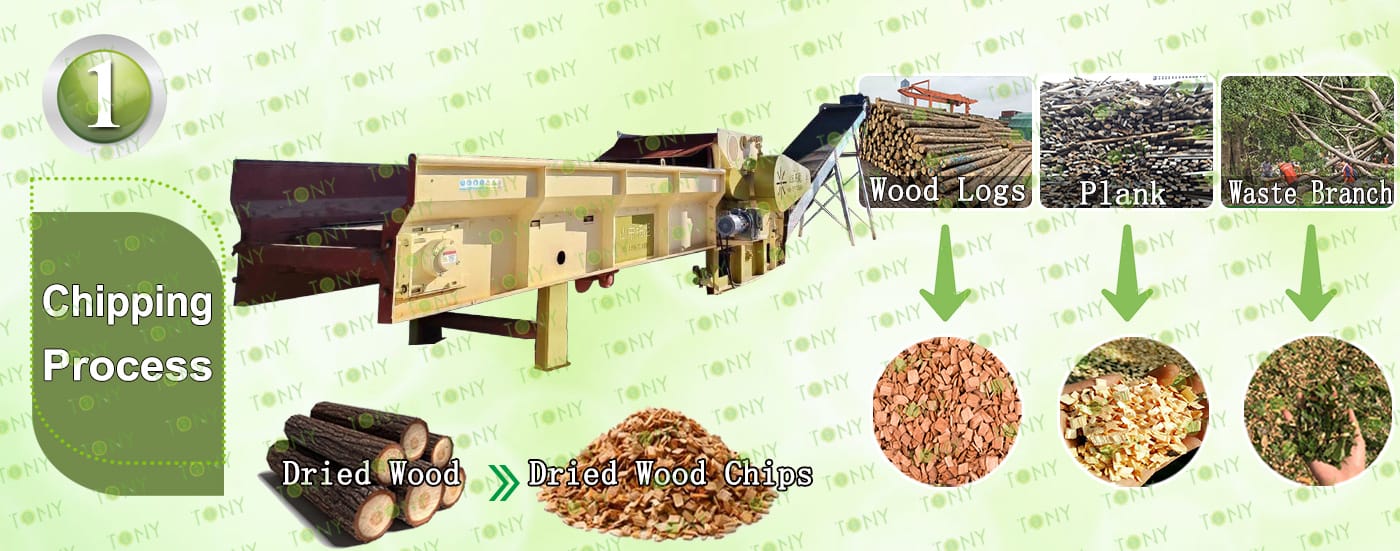
1.Wood Chipping Process:
A.This process is mainly used to grind the wood logs whose diamater is under 30cm into wood chips with size 25-55mm. The finish wood chips size can be adjustable by changing different sizes of screeners and adding flying knives inside the wood chipper.
B.TONY Brand TPC1300-600-132 model with 6flying blades type
C.Capacity:10-15Ton/Hour.
Main Parts:
(1)TONY's Comprehensive Chipper.
(2)Feed And Discharge Belt Frequency Control To Prevent Card Material
(3)Hydraulic System Control Can Be Used For Thicker Materials
(4)Electronic Control System Allows The Equipment To Be Used Normally
Contact Tony For More Details With Quotation

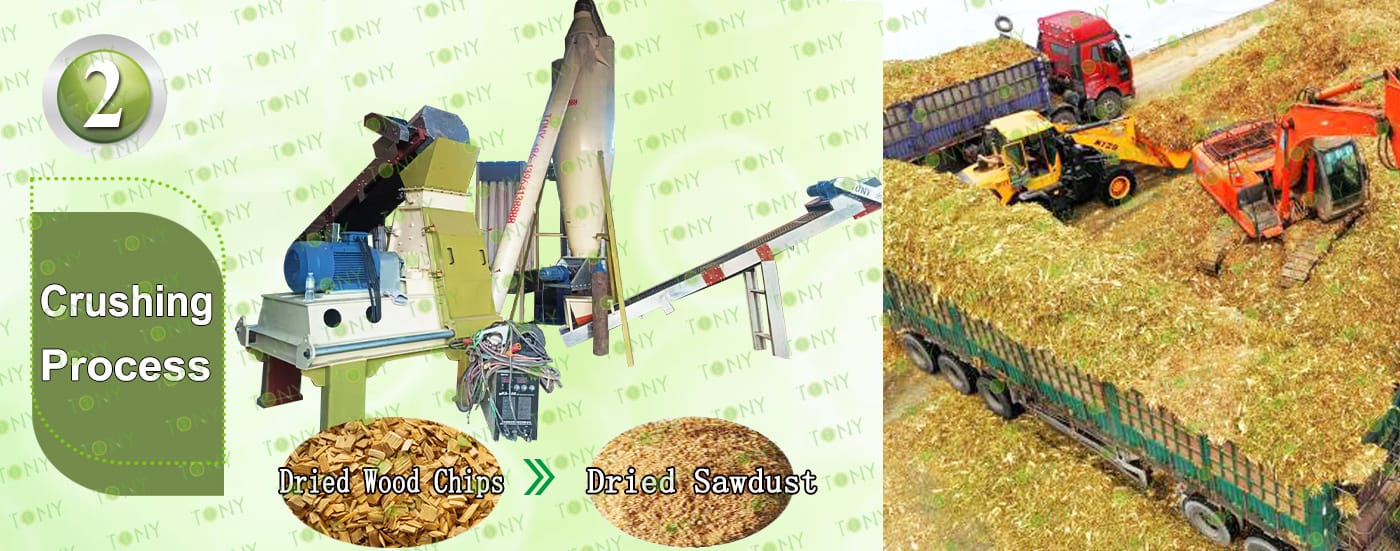
2.Wood Chips Fine Crushing Process:
A.This process is mainly used to crush 25-55mm wood chips into 8-14mm sawdust.
B.Capacity:8.5-9.5Ton/Hour.
C.TONY use effective hammer mill TFD75*132-132*2KW*2set
Main Parts:
(1)TONY Effective Hammer Mill
(2)Galvanized Dust Collector.
(3)Sawdust Transportation Fan Blower.
(4)Cyclone With Airlock.
(5)Electrical Cabinets.

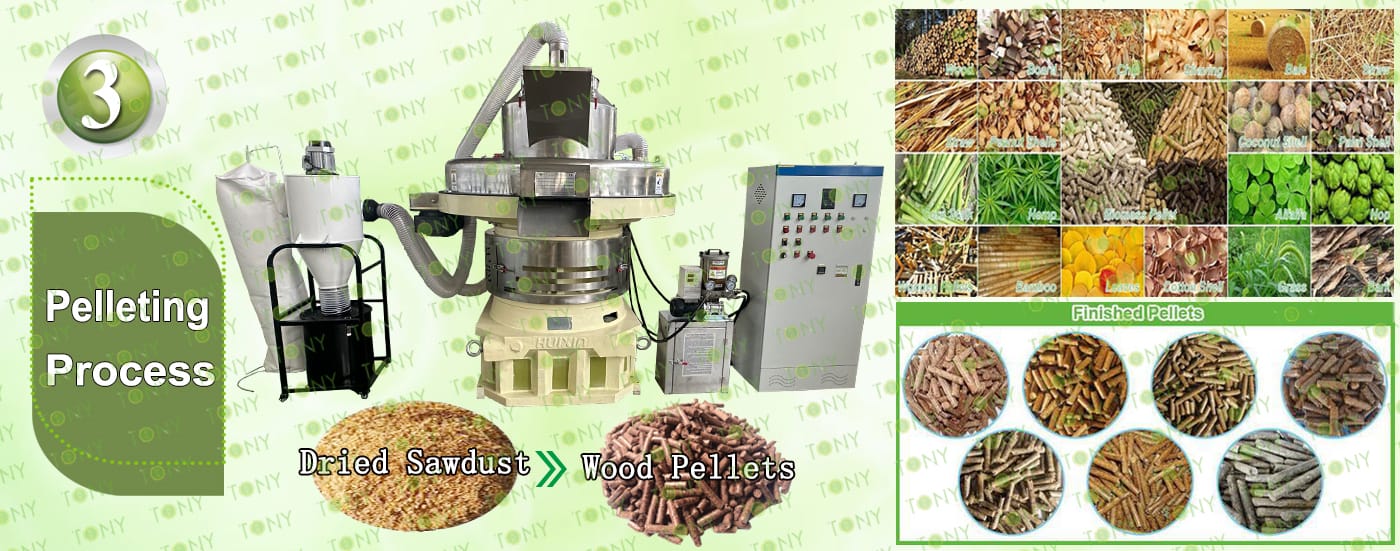
3.Pelletizing Process:
A.This process is mainly used to to product pellets into φ6-8mm.
B.Capacity:8.5-9.5Ton/Hour.
C.TONY Brand Vertical Ring Die Pellet Machine TYJ760-III-185KW*3Sets
D.Double Screw Cycling Silo is added above the pellet machine, which has the advantages of saving space, saving labor, intelligently controlling the feeding speed, not easy to block the material, and improving production efficiency.
Main Parts:
(1)TONY's New Vertical Ring Die Pellet Machine.
(2)Cyclone And Bags Dust Collectors.
(3)Automatic Lubrication System.
(4)Electrical Cabinets.
You can chose TONY new type SS304 pellet machine

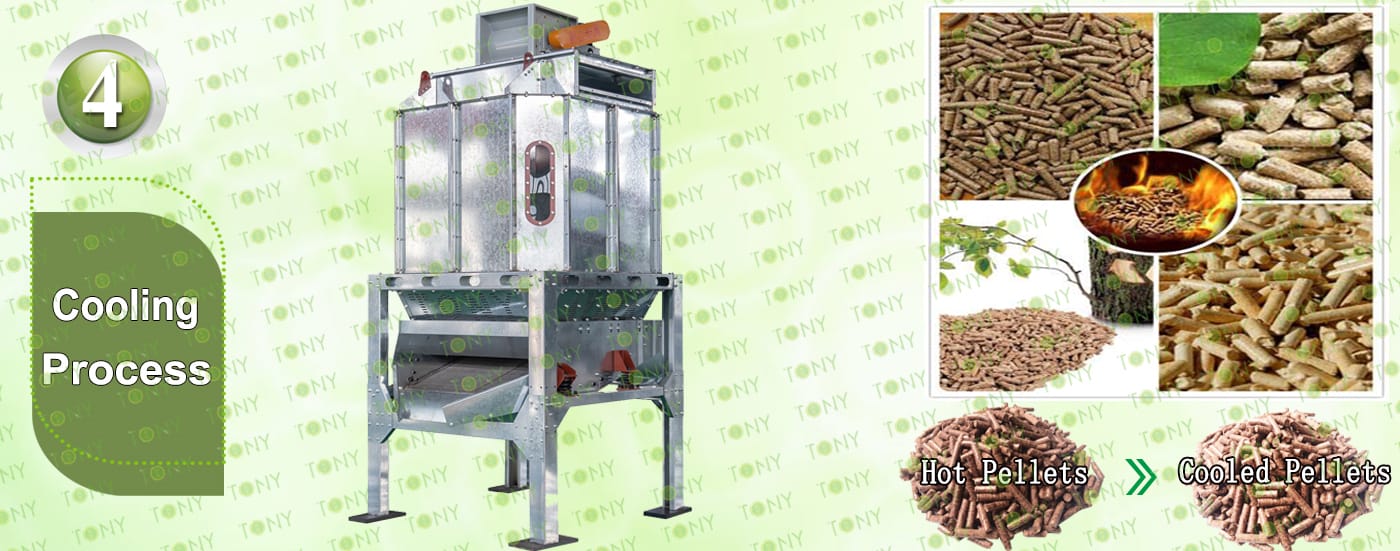
4.Cooling Process:
A.This process is mainly used to cool pellets from 80-90℃ to 20-30℃
B.1Set Of TONY Galvanized Cooler Seperator With Capacity 8.5-9.5 Ton/Hour
Main Parts:
(1)TONY's Galvanized Cooler Seperator With Vibrating Screen.
(2)Cyclone And Bags Dust Collectors.
(3) Fan Blower.
(4)Connect Pipes.


5.Packing Process:
A.This process is mainly used to pack pellets into 15-50KG/Bags.
B.1 Set of TONY Double Packing Machine.
Main Parts:
(1)TONY's Double Packing Machine.
(2)Sew Machine, Buyer Can Also Choose Hot Seal Machine For Chosen,To Confirm With Tony For The Price Difference.
(3)Bags Transportation Conveyors.
(4)Feeding Inlet Silo.
(5)Electrical Cabinets.

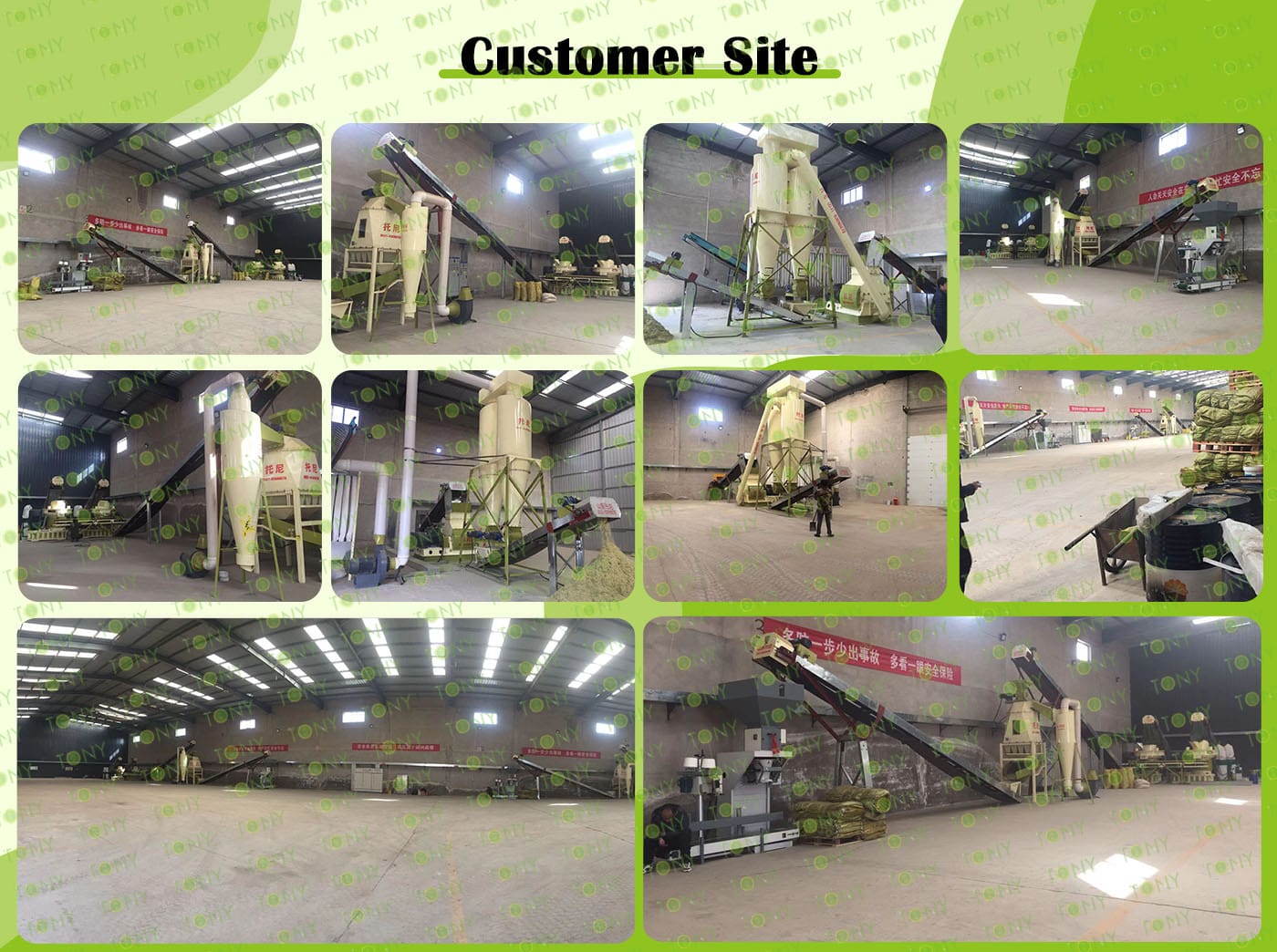

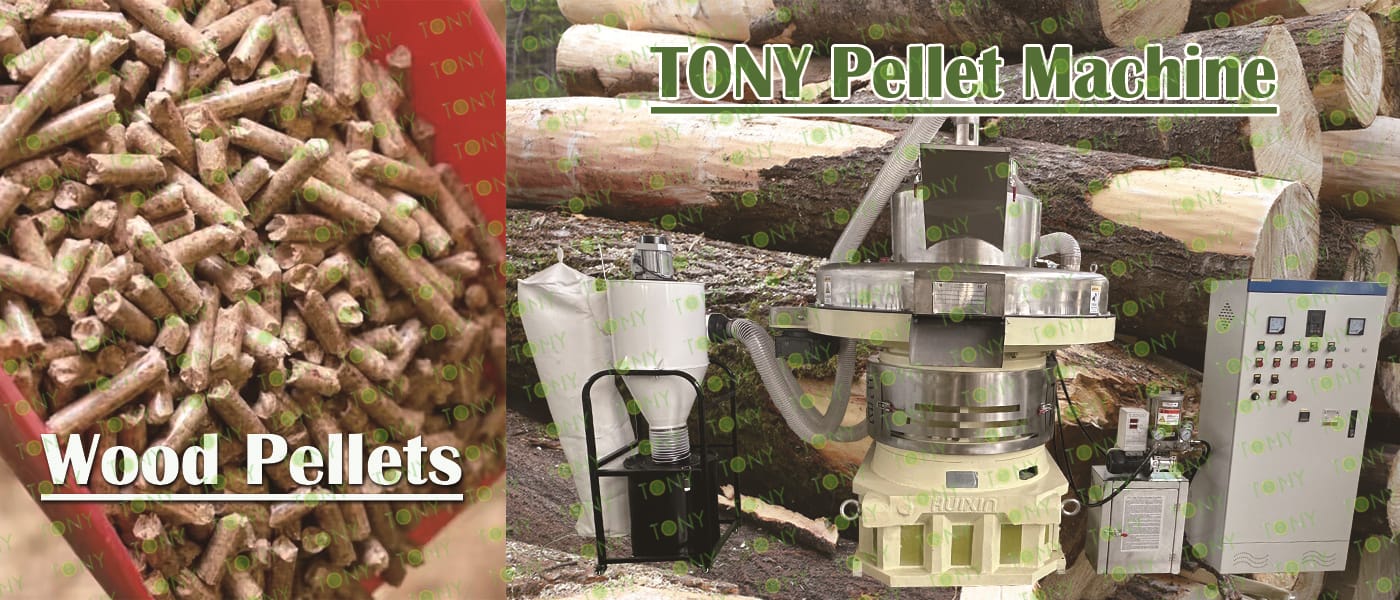
Amidst growing environmental awareness and accelerating energy transitions, the dry wood processing biomass pellet project is attracting numerous entrepreneurs with its broad market prospects and considerable economic benefits. This project converts dry wood (such as sawdust, wood chips, and scraps) into high-calorific-value, clean, and environmentally friendly biomass pellet fuel, aligning with the green development trend and poised to carve out a new niche in the market.
Project Advantages
1.Easy Raw Material Access:
The large amount of dry wood waste generated by wood processing plants and furniture factories, as well as logging residues in forest areas, are all sources of high-quality raw materials. In regions with abundant timber resources, the stable and low-cost raw material supply provides a solid foundation for project operations.
2.Significant Environmental Benefits:
Compared to traditional fossil fuels, biomass pellets emit near-zero carbon dioxide emissions when burned, virtually eliminating harmful gases like sulfur dioxide and nitrogen oxides. This effectively contributes to reducing air pollution, aligns with the national "dual carbon" goals, and is readily accessible for policy support and market acceptance.
3.Strong market demand:
In the industrial boiler sector, many companies are adopting biomass pellets as a replacement for coal to reduce energy consumption and meet environmental protection requirements. In residential heating, as residents' environmental awareness grows, biomass pellet heating stoves are becoming increasingly popular in rural and suburban areas. Furthermore, biomass power plants also have significant demand for pellet fuel, providing diverse sales channels for the project's products.

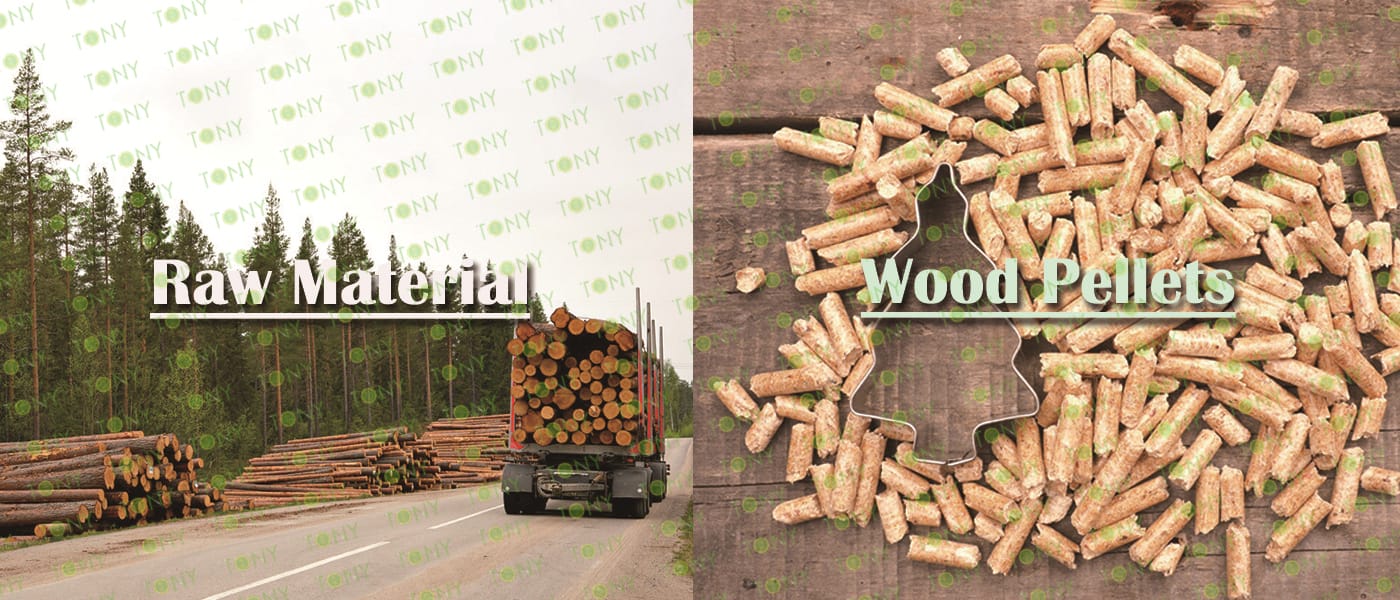
1.Near-zero carbon emissions:
The carbon dioxide released during the combustion of dry wood pellets is essentially balanced by the carbon dioxide absorbed during the growth of trees, forming a ""carbon cycle"" and a ""carbon-neutral"" energy source. Its ash content is ≤2% (far lower than the 10%-20% of coal), and it produces no black smoke or sulfur compounds. Its nitrogen oxide emissions are only one-fifth of those of coal, fully complying with the National Boiler Air Pollutant Emission Standard (GB 13271-2014) and international environmental standards such as the EU ENplus.
2.Waste Recycling:
Dry wood pellets are primarily made from wood processing waste (wood chips, scraps) and forestry residues (dried branches, bark). These wastes, previously destined for landfill or incineration, are converted into clean energy, reducing solid waste pollution while achieving ""waste-to-resource"" transformation. This aligns with national policies on ""zero-waste cities"" and the development of a circular economy, making it easier to obtain environmental subsidies or tax incentives from local governments.



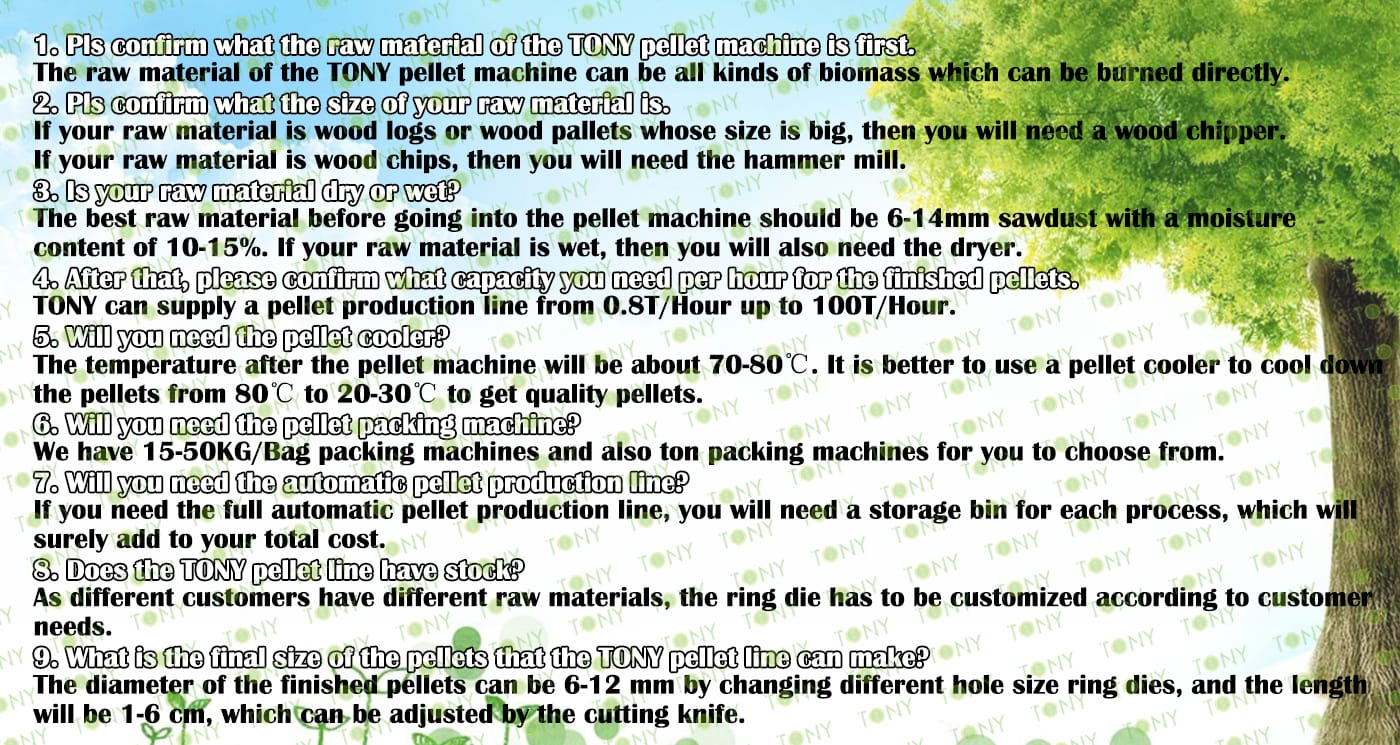


2025 Tony Machinery - All Rights Reserved. Map